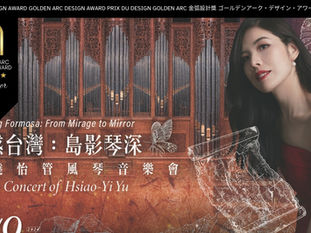
At the recently concluded Future Art & Design Award UK, architect and installation artist KIM, MINJAE was recognized for the innovative and emotionally resonant installation Cloudhaven. Drawing from over a decade of international experience across architecture, interior and landscape design, their work bridges the realms of aesthetics and sustainability. Cloudhaven stood out for its immersive storytelling, environmentally conscious design, and the way it reimagines public space as a dialogue between nature and urban life.

Artist's Introduction
With over 13 years of professional experience in architecture, interior design, landscape design, and master planning (having worked with firms such as BIG, Erick van Egeraat, Hassell, IDA, KMJ+A, Haeahn, and Leigh & Orange), I have led the overall design of projects spanning workplace, cultural, and residential sectors. My approach integrates a deep consideration for global sustainability issues and public and cultural contexts. I have also developed strong expertise in architectural design as well as in installation art. My design philosophy is rooted in the belief that architecture is a dialogue between art and life—a conversation that weaves together aesthetics and sustainability to create harmonious environments where both can thrive. Each of my designs serves as a narrative, reflecting the intricate interplay of human emotions, the unique attributes of specific locales, and the diverse confluence of historical, contemporary, and future-oriented issues. I strive to achieve a balance that carefully integrates aesthetic values, contextual nuances, functional pragmatism, economic sensibility, political influence, and technological advancement.
Can you describe the creative process behind your work and what motivates you to create?
The creative process behind my work is a deeply reflective and iterative journey that begins with an exploration of the context and narratives surrounding each project. I believe that every design should tell a story, one that resonates with the unique attributes of its locale and the emotions of the people who inhabit it. Initially, I immerse myself in research, gathering insights about the cultural, historical, and environmental aspects of the site. This phase allows me to understand the community’s needs and aspirations, which informs the overall vision for the project. For instance, in my recent installation, "Cloudhaven," I aimed to bridge the gap between urban life and nature, fostering connections among individuals while emphasizing environmental sustainability. Once I have a clear understanding of the context, I begin sketching and conceptualizing ideas. I explore various forms, materials, and technologies to create designs that are not only aesthetically pleasing but also functional and sustainable. The use of energy-efficient LED lights in "Cloudhaven," for example, reflects my commitment to eco-friendly practices while enhancing the immersive experience of the installation. What motivates me to create is the desire to contribute to a more sustainable and connected world. I am driven by the belief that architecture and design can uplift communities, inspire individuals, and advocate for a future where environmental consciousness is at the forefront. Each project is an opportunity to push boundaries, challenge norms, and ultimately make a positive impact on society.

What was the most exciting or challenging part of creating the work you submitted to the competition?
The most exciting and challenging part of creating "Cloudhaven" was striking a balance between artistic expression and environmental sustainability. As I developed the installation, I aimed to create a captivating visual experience that also conveyed a meaningful message about our connection to nature and the importance of sustainability. One of the key challenges was designing the cloud-shaped lighting elements to evoke the desired emotions while ensuring they were energy-efficient and eco-friendly. I had to carefully select materials and technologies that would minimize the environmental impact without compromising the artistic vision. This required extensive research and experimentation to find the right solutions that blended aesthetics with functionality. The most rewarding aspect was witnessing the installation come to life and the positive reactions from viewers. Seeing people engage with the artwork, share their experiences, and find moments of serenity amidst the urban landscape confirmed the purpose of my work. It was fulfilling to know that "Cloudhaven" resonated with others and sparked conversations about sustainability and our relationship with the environment. This journey reinforced my belief in the power of design to inspire change and foster connections.

How would you describe your creative style and the key characteristics that define your work?
My creative style is characterized by a focus on sustainable design principles while exploring a variety of forms and concepts. I draw inspiration from nature and aim to create aesthetics that integrate harmoniously with their surroundings. A strong commitment to sustainability guides my work, prioritizing eco-friendly materials and energy-efficient technologies to minimize environmental impact. I emphasize creating immersive, interactive experiences that invite viewer engagement and evoke emotional responses, telling stories that reflect the cultural and historical context of each location. Ultimately, my goal is to merge beauty with purpose, ensuring that each project contributes positively to its environment and fosters meaningful connections with the audience.
What has been your experience participating in the competition? Were you satisfied with the process and results?
Participating in the competition has been a rewarding experience that allowed me to challenge myself creatively and push the boundaries of my work. The process encouraged me to refine my ideas and present them in a way that resonates with a broader audience. I appreciated the opportunity to receive feedback from judges and peers, which provided valuable insights that helped me grow as an artist. Overall, I was satisfied with both the process and the results. The competition motivated me to elevate my project and think critically about its impact. While the outcome was important, the journey of exploration, development, and connection with others in the community was equally valuable. It reaffirmed my passion for my work and my commitment to creating meaningful, sustainable designs.

Where do you see the future of the art and design industry heading in the next 5-10 years?
In the next 5-10 years, the art and design industry will prioritize sustainability and eco-friendly practices as environmental concerns grow. The integration of advanced technologies, particularly virtual and augmented reality, will transform how art is created and experienced, highlighting immersive installations and digital art forms. Increased interdisciplinary collaboration will see artists, designers, scientists, and technologists working together to tackle complex social issues innovatively. Diversity and inclusion will be emphasized, reflecting a broader range of voices and perspectives, while personalized experiences will cater to consumer demands for tailored creations. Ultimately, the future of the art and design industry will be characterized by a blend of creativity, technology, and a commitment to social and environmental responsibility.
Follow the artist:
Linkedin: https://www.linkedin.com/in/minjae-kim-arch/
Faceboook: https://www.facebook.com/minjae.kim.182
Instagram: https://www.instagram.com/kimminjaearch/






